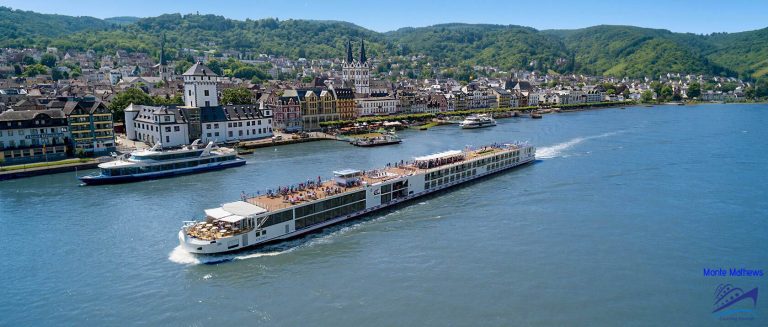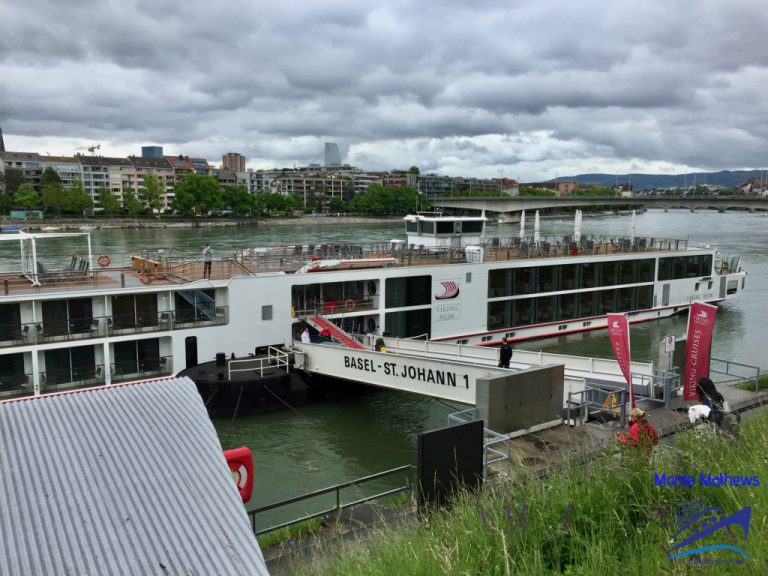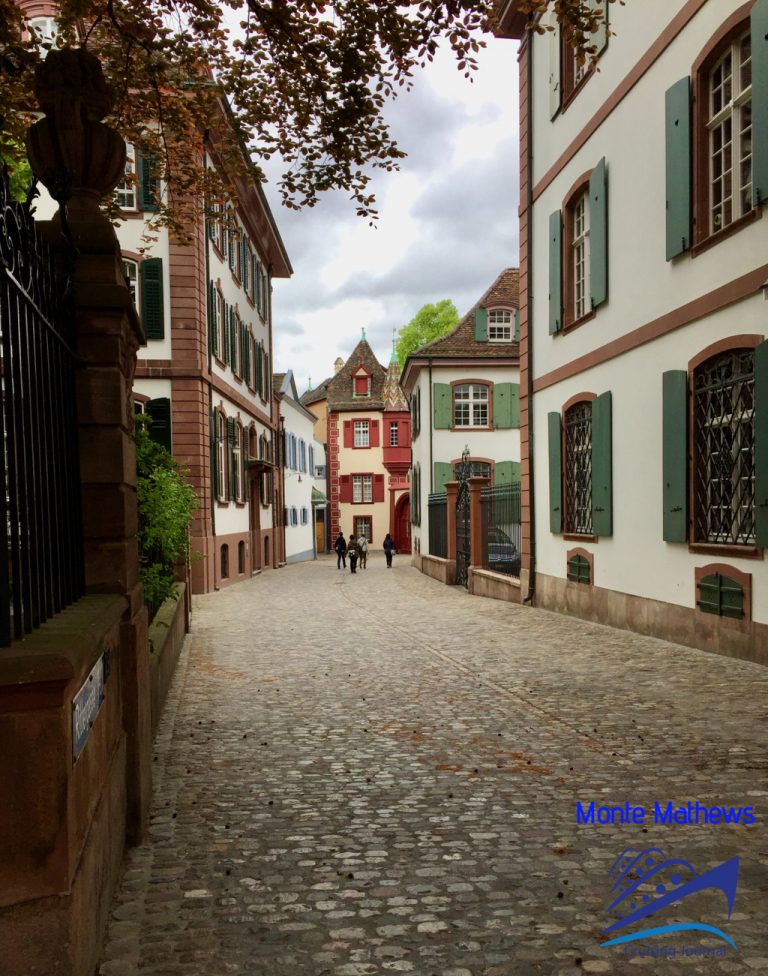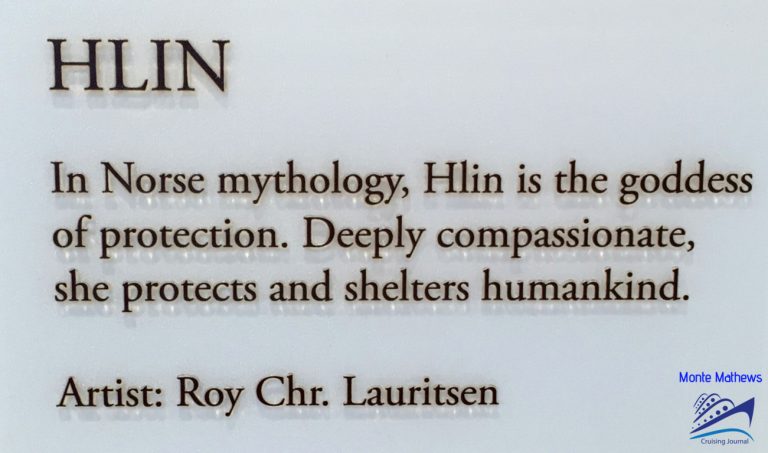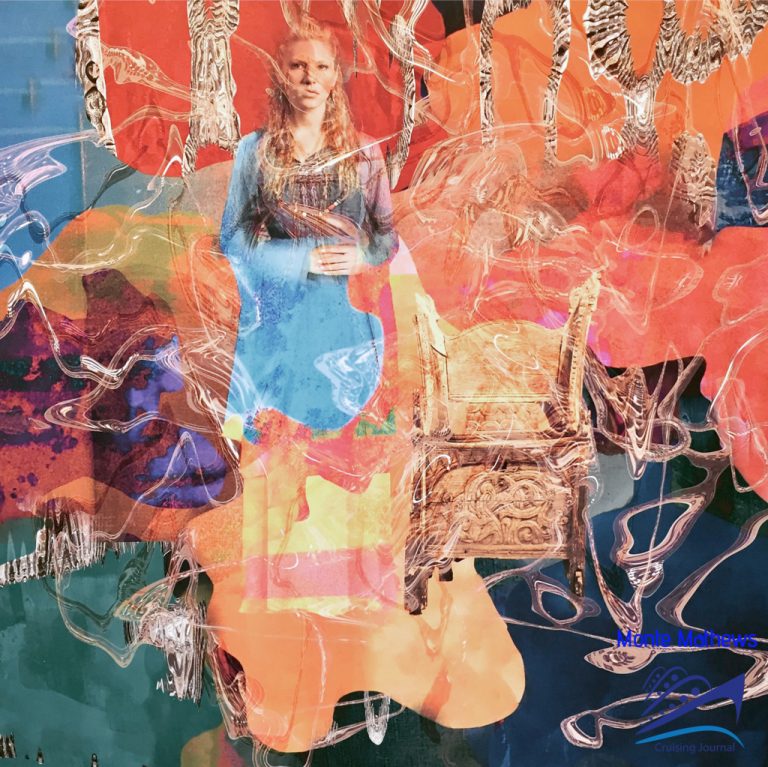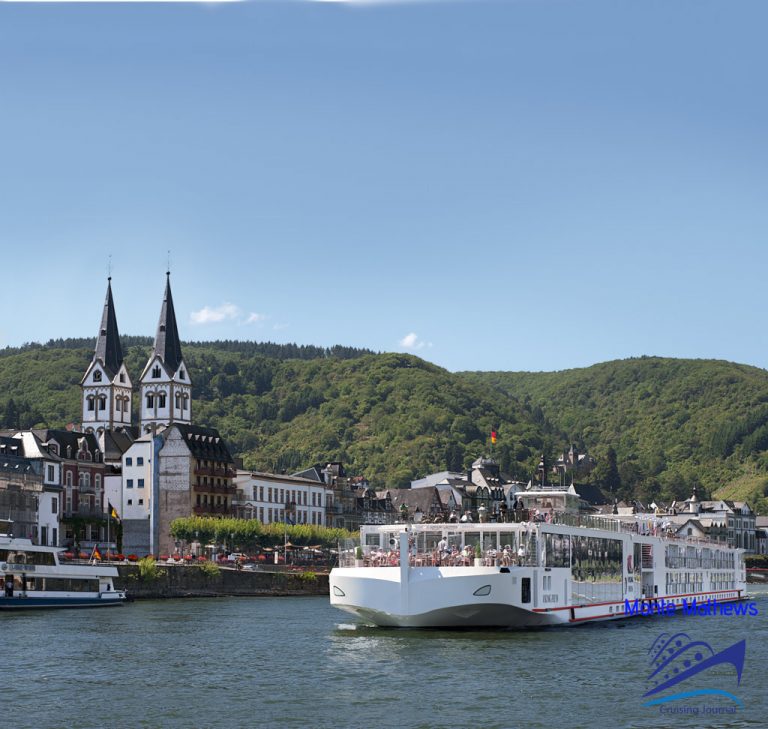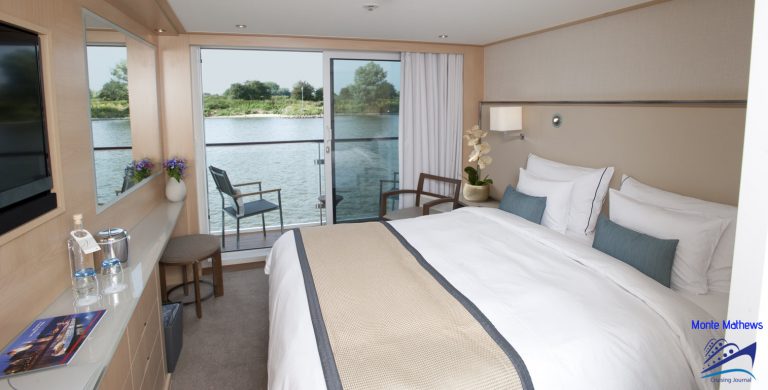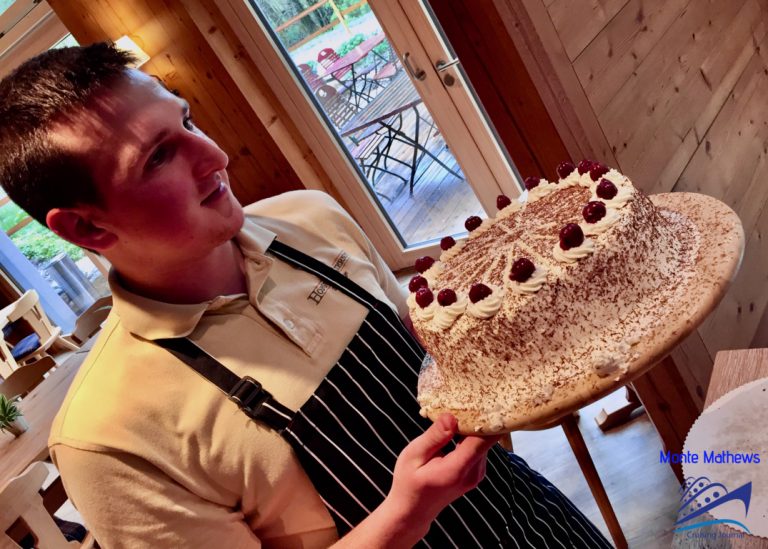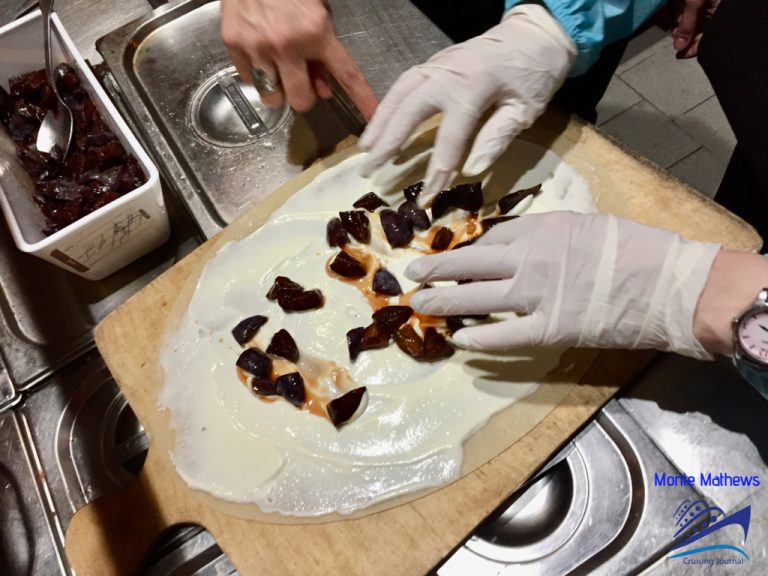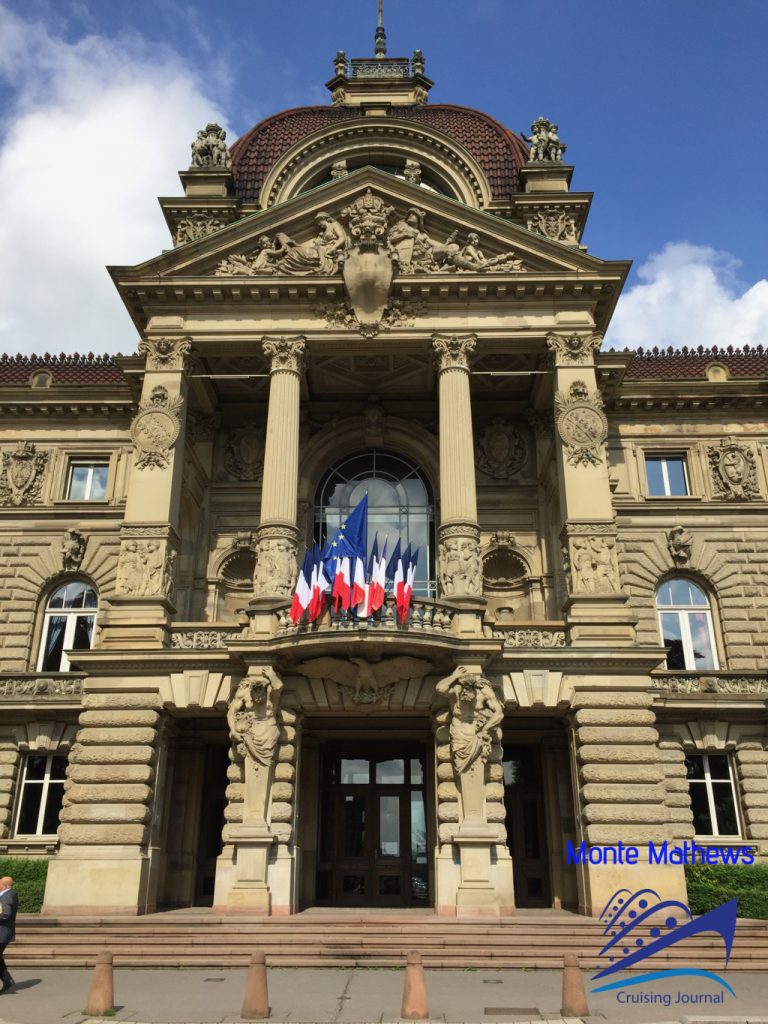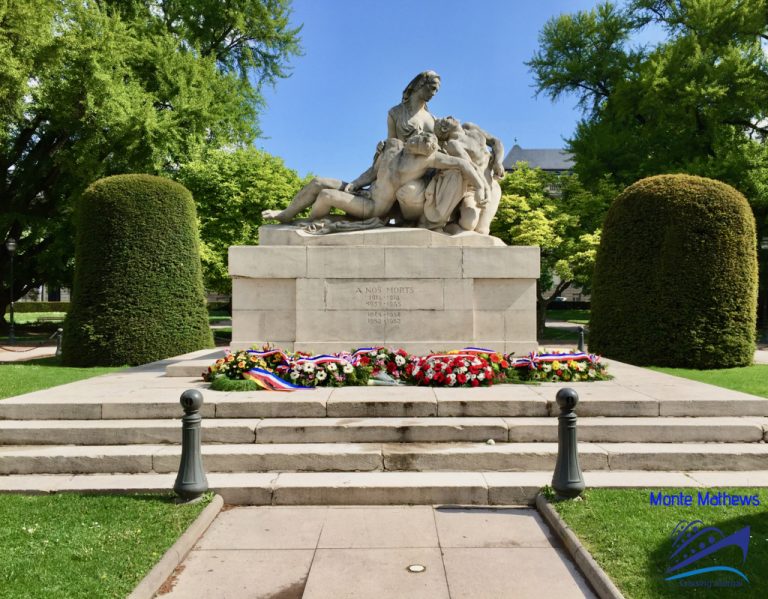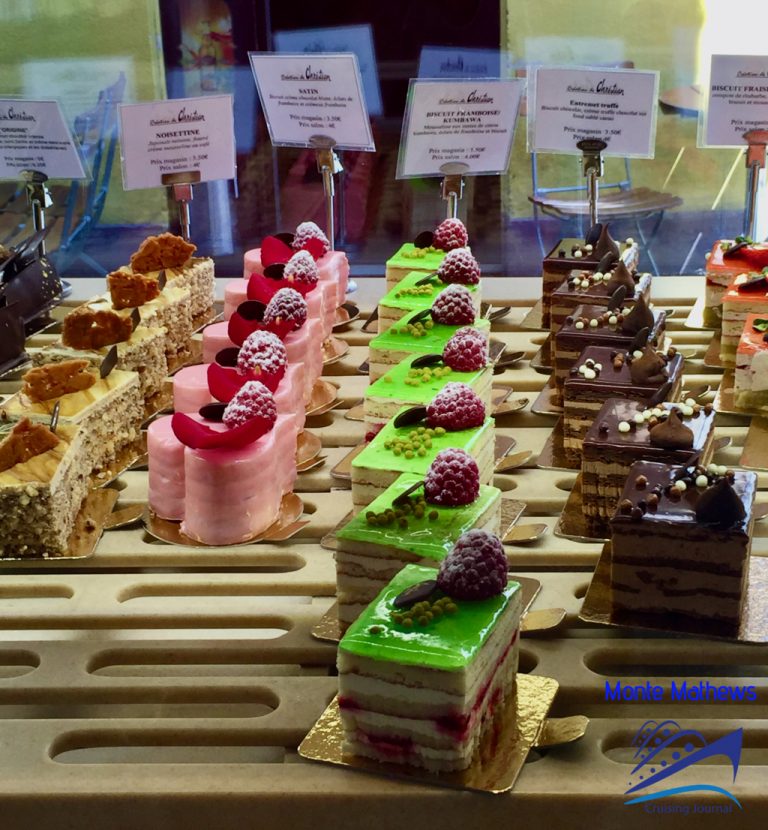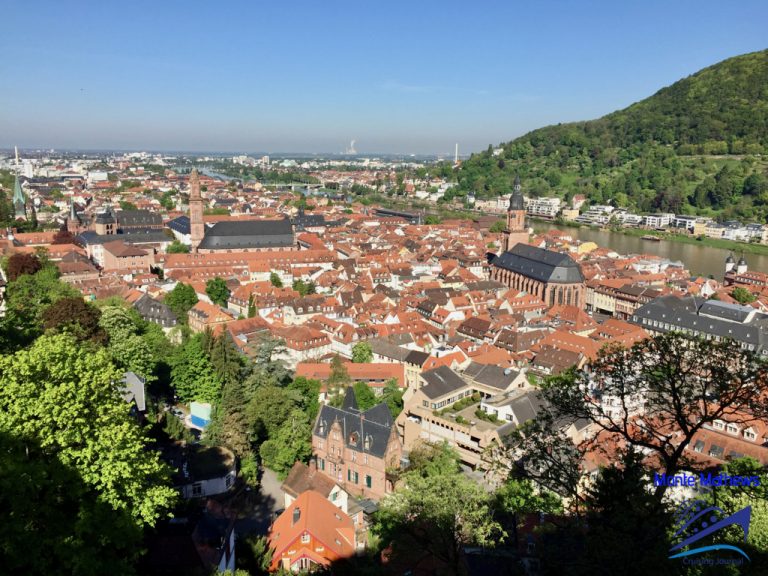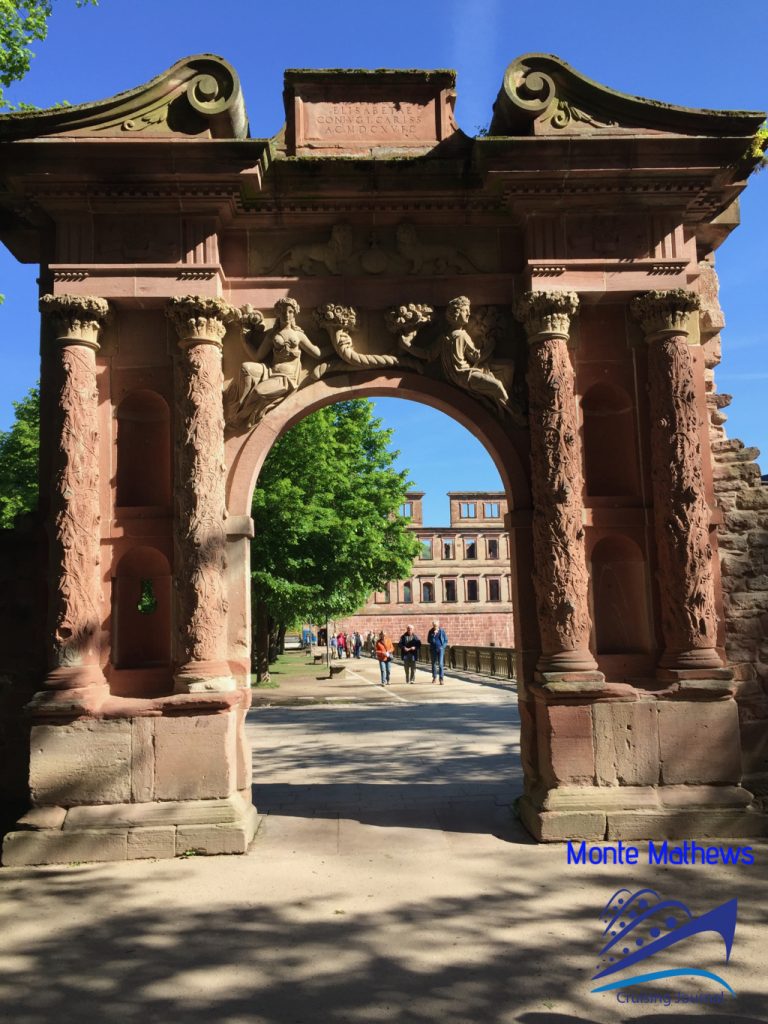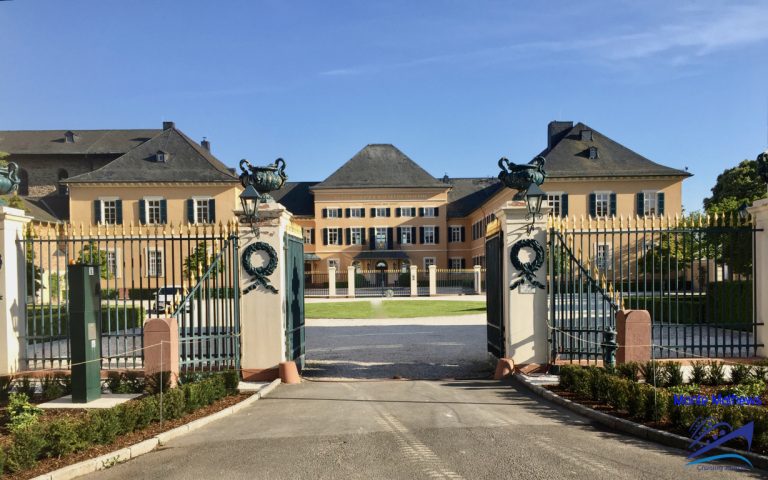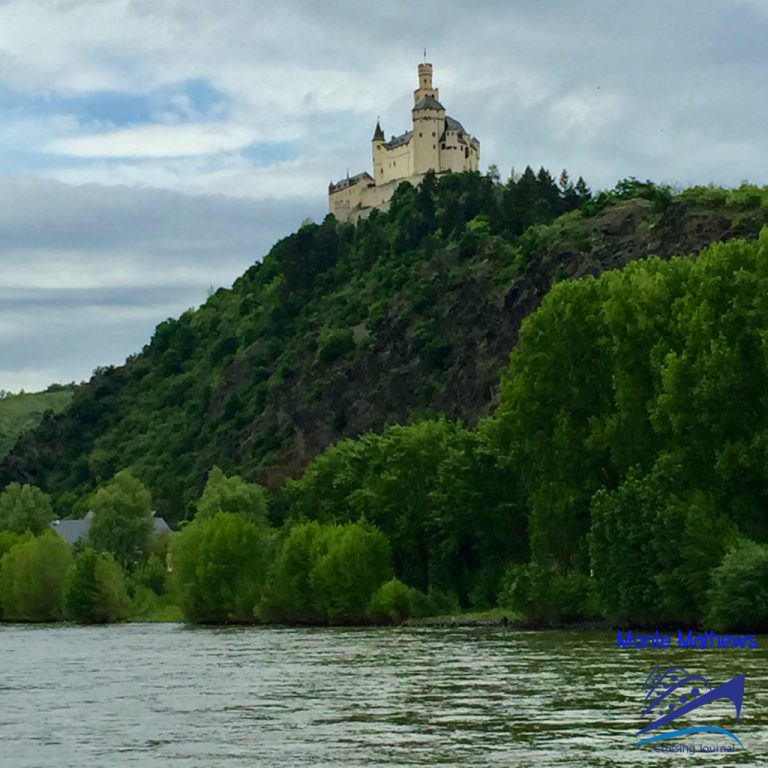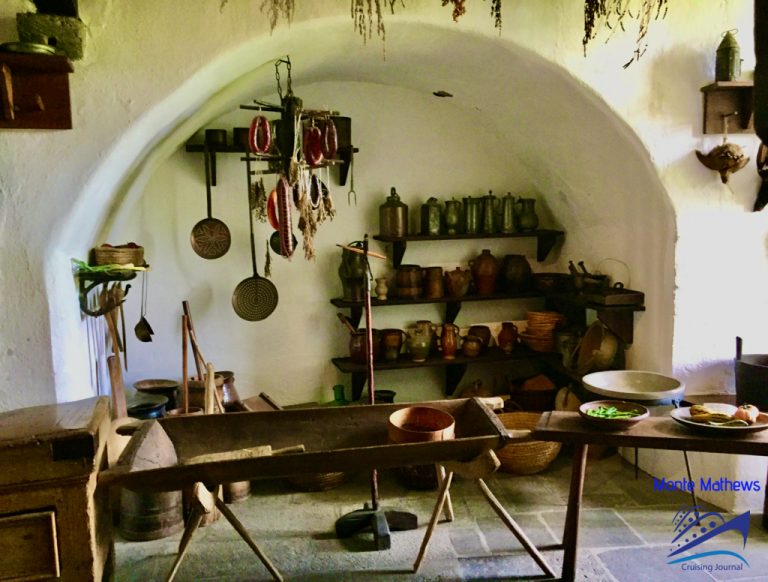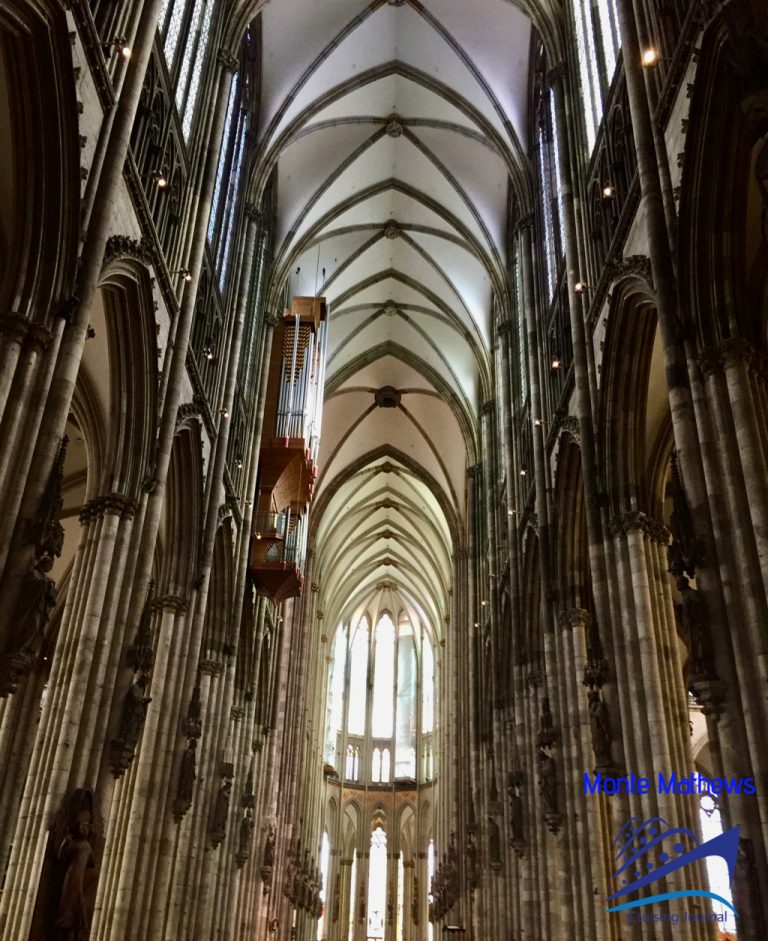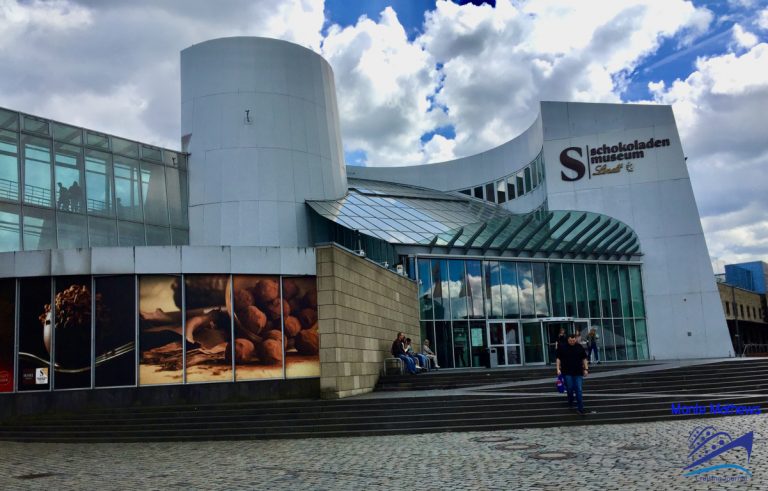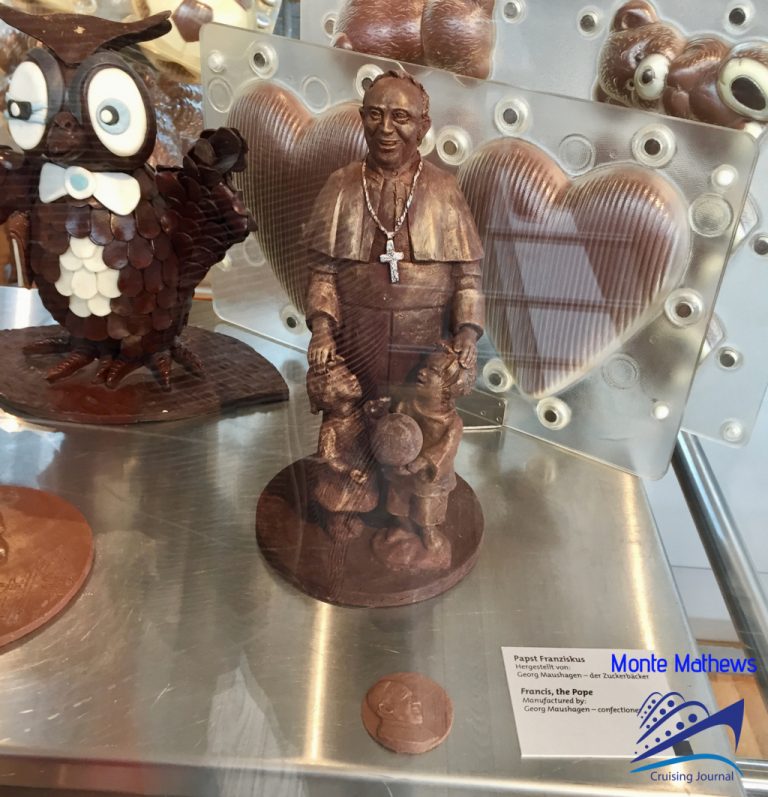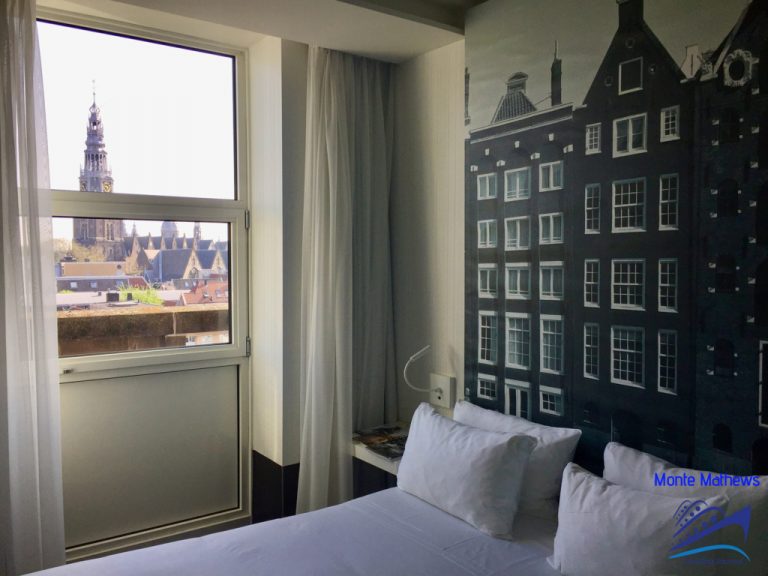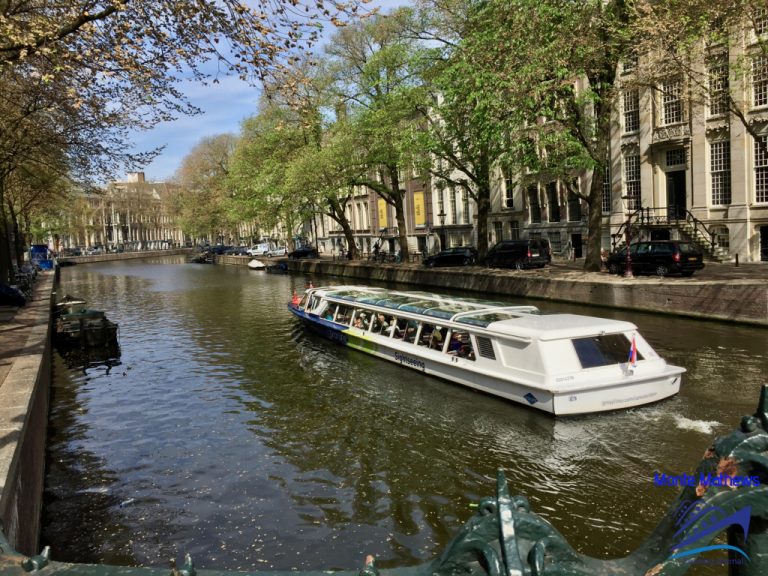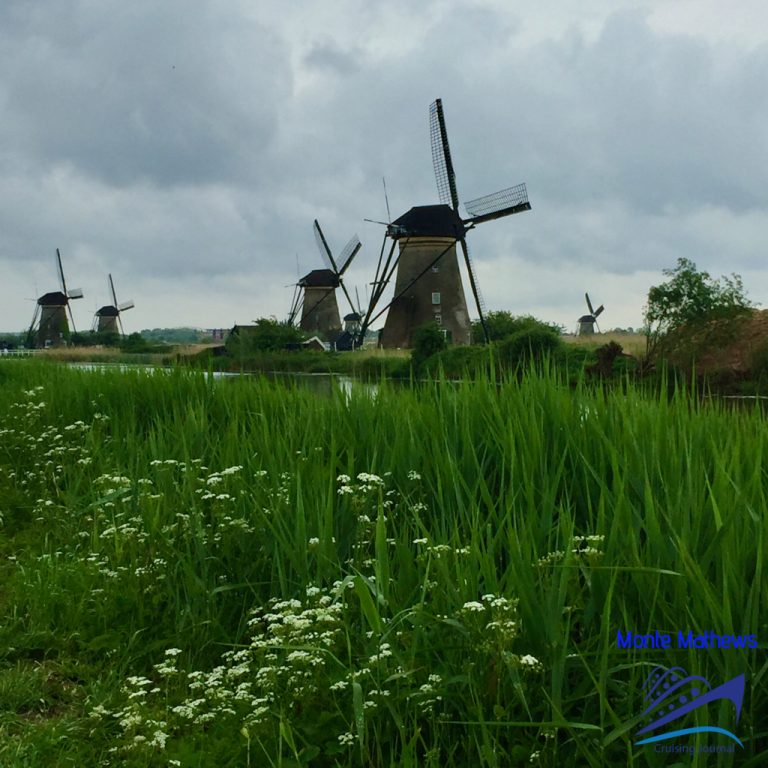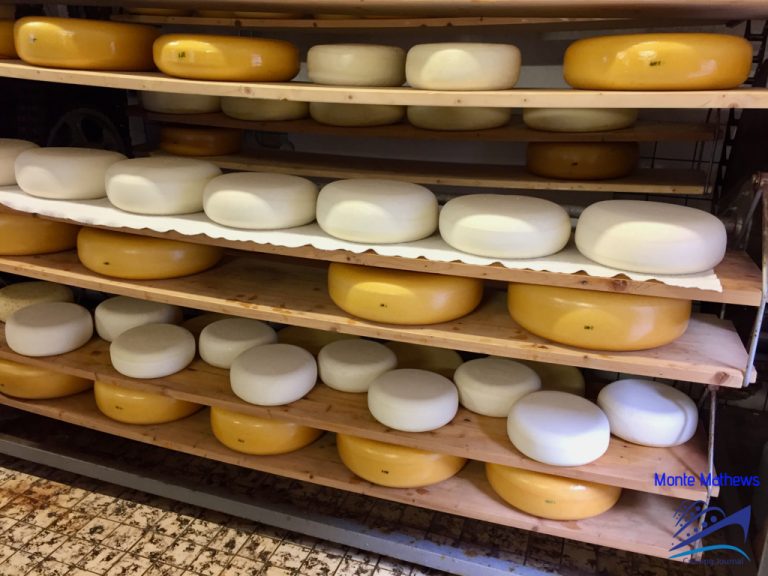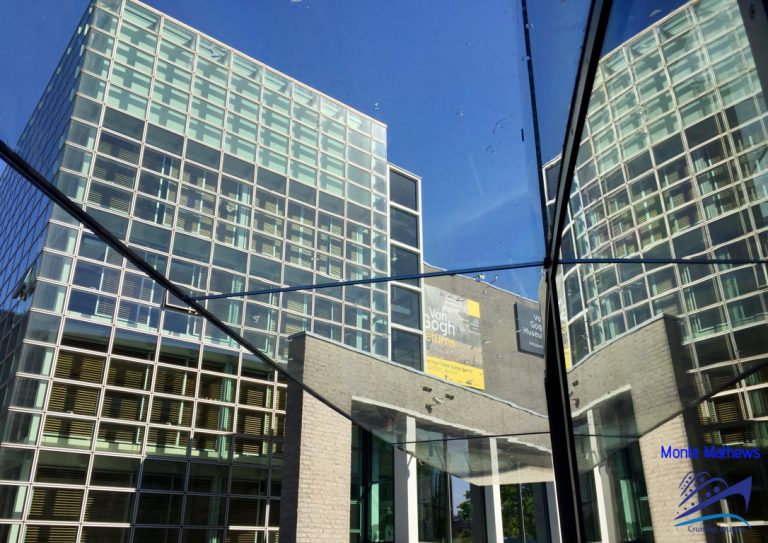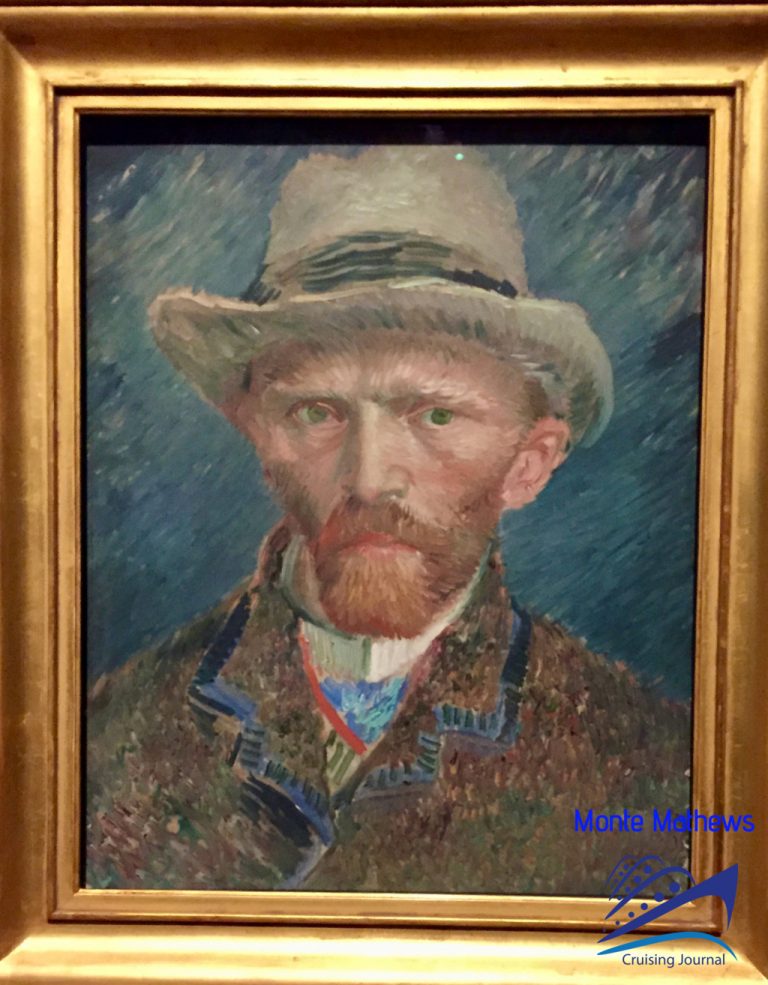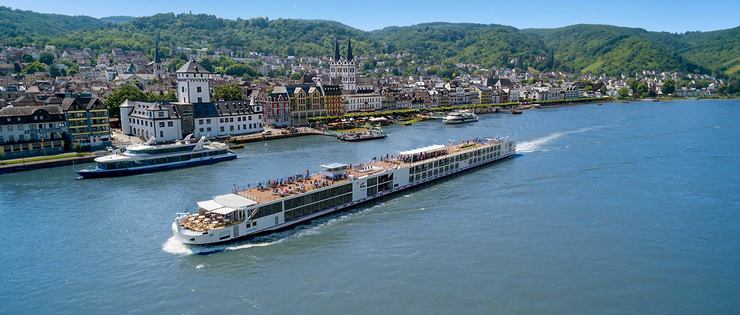Viking River Cruises: Day by Day On Viking Hlin
Viking River Cruise’s Rhine Getaway: Monte Mathews’ travel diary during an European cruise on board Viking Hlin.
As river cruising grows and grows in popularity, Viking River Cruises, the industry giant and its most award-winning cruise line, has added something new. Its world-wide itineraries now feature Culinary Tours, Wine Tastings and multiple opportunities to sample local cuisine on board and ashore, at virtually every port. We went along for the ride on Viking’s “Rhine River Getaway” to sample what was on offer. Miraculously, we didn’t gain an ounce but it wasn’t for lack of trying on Viking’s part. Fortunately, there’s a lot of activity with along with a lot of delicious food.
Day 1 Basel, Switzerland. It was a Sunday morning so the airport and my plane from Paris was empty. The flight to Basel lasts just over an hour and in the best thing you can say about air travel today, it was ‘uneventful’. Basel’s airport serves three countries: France, Germany and Switzerland. There are two exits from the airport. One leads to the European Union countries of France and Germany, the other into Switzerland. One wrong turn and you’ve entered the wrong country. Fortunately, I didn’t. Once outside the terminal, one of Viking’s familiar Mercedes buses awaited and we were soon at our destination, our sparkling white ship.
Longships_Mani_Middle_Rhine_Boppard_Credit Viking Cruises
Viking Hlin in Basel
Beautifull Basel
In Basel, we joined Viking Hlin, one of Viking’s fleet of Longships. “The Rhine River Getaway” can be taken in either direction from Basel to Amsterdam or vice-versa. While we waited for our staterooms to be readied, Viking offered an Introductory Walk which took in parts of the old city, its cathedral and landmarks. Quite a few of our fellow passengers opted for the walk. The rest waited aboard ship until the cabins were available.
Viking Longships staterooms are amazing feats of Scandinavian design, somehow managing to encompass a King-Sized bed, an in-room refrigerator, a bathroom with a heated floor, a balcony with space for two chairs, plenty of space to stow a week’s worth of clothing, a 40 inch television and multiple outlets for the endless number of electronic devices we travel with– all in 210 square feet of space. The blond wood accents keep the staterooms light and bright as well truly well-thought out lighting with bedside controls. Aside from an occasional swoosh from the adjoining bathroom, the Longship’s staterooms are miraculously soundproofed so your neighbor’s television never interrupts the quiet.
Description of Hlin
Portrait of Goddess Hlin
While Viking Cruises includes a complementary guided tour at every stop including our Basel walk, many of its culinary offerings require an extra fee for extras including meals, samples, instruction–ranging from $49.00 to $199.00 for a day-long Culinary adventure. But even if you don’t spring for these, there are many great food opportunities along the way. We’d barely had time to unpack before the first (complementary) Wine and Cheese tasting took place in the ship’s airy Lounge. Here we sampled the wines we were to drink as our Longship traveled through one of the world’s great wine-growing regions. Included in our fare, these wines were selected to be served at lunch and dinner. Reislings predominated, not surprisingly since they account for 80 percent of the wine grown on the banks of the Rhine. Also on the list were several Rheingau Reds. Lighter than their Spanish or French counterparts, these German wines were wonderful complements to lighter items on the Chef’s menus. As to the cheeses, every country we passed through was represented from Swiss Comté to German Munster to France’s Tomme d’Alsace and Tomme de Savoie.
The first night aboard ship, we got a look at our thoroughly International passenger mix. Past Viking trips had been overwhelmingly American, spurred to travel on Viking when the ship sponsored “Downton Abbey” at the height of that TV series’ popularity. Aboard this trip were 26 Brits, 10 Canadians, 2 Australians, 2 Mainland Chinese and the rest Americans including 48 Chinese Americans. And among all those passengers, 21 of us were Journalists. There were Travel Writers from Canada and all over the US, Bloggers who specialize in Fitness Travel, 50 plus Travel, River Cruise Travel, Instagram wonders with thousands of followers and just 2 Public Relations people to stir us all in the right direction.
Longship_Boppard Rhine Credit Viking Cruises
Veranda_StateRoom Credit Viking Cruises
Day 2. Breisach, Germany for the Black Forest and an optional side trip to Colmar, France. The culinary event for today was held in Germany’s Black Forest. And you can likely guess what was served. It was a Schwarzwderkirschtorte. And I’m giving you five seconds to figure out that that must mean “Black Forest Cake”. This four-layer chocolate sponge cake is flavored with Cherry Schnaps (Kirschwasser) which is also added to its mounds of whipped cream, cherries and chocolate shavings. The recipe is thought to date from the 16th century. There’s even the quaint suggestion that the cake got its name from the traditional costume worn by women in The Black Forest. See what you think: Their dress was black (think chocolate flakes, their blouse white like the cream and their hat, pictured here has red pom-poms that look for all the world like cherries.
On our Viking tour to somewhere called Hofgut Sternen, a kind of un-Viking like ‘theme park’, a Black Forest cake was put together before our eyes. Layers of chocolate sponge cake were covered in mounds of whipped cream, while sour cherries occupied a single layer and the local Kirschwasser moistened the surprisingly light and not-too-sweet cake. A young man took us through each step. At the end of his demonstration, wanting some background, I asked where he had gone to Culinary School. He hadn’t. Instead, he was an electrician in his native Croatia. Welcome to the European Union. His cake, however, was no match for the contemporary version created by the Hlin’s on-board pastry chef. Served that night, it was the first of many exquisite desserts on board. These are all created by a chef whose background did include culinary school. And I am almost sure he was never an electrician.
Black Forest Cake
Day 3. Kehl, Germany, the port for Strasbourg, France. For a passionate foodie, today’s All-Day excursion, “Taste the Best of Alsace” was sheer nirvana. The “Grand Ile” of Strasbourg is the first of 5 UNESCO World Heritage sites on this itinerary. And what a splendid place it is! Viking prides itself on the quality of its guides and here in Strasbourg, ours was top drawer. She’d been the President of the local guides association and it showed in her ability to share her city with us. The city has a tortured history. Strasbourg alternated between being part of France and part of Germany, often within the same war, as was the case in World War II. A very moving War Memorial in front of the Hotel de Ville, shows a grieving mother. Her two sons, one facing France and the other Germany, hold hands, united in death in a city divided by war. The Monument makes no mention of either country– just the years of the wars that consumed Europe for generations.
The dual cultures of Strasbourg are part of the city’s culinary heritage. One example: The hearty breads of Germany live side by side the delicacy of French pastries. Blending both food and history in one monumental walk, we took in bakeries and cheese shops, a wine-tasting with cheese pairings, a shop that made nothing but gingerbread and even a hands-on cooking class. There we made Tartes Flambées or Flammekeuche, a sweet or savory Alsacienne version of Pizza that gives the real deal a run for its money.
Cooking Demonstration Viking Hlin
If you hadn’t signed up for the “Taste” tour, back on-board Viking Hlin, Executive Chef Mladen Arezina was giving a full-on demonstration of Flammekeuche himself. Menus aboard all Viking Longships emanate from Chef Anthony Mauboussin, Viking’s Executive Chef. Working out of his home in Chamonix, France, Chef Mauboussin creates menu items that reflect time and place of every Viking destination. These recipes also provide a standard of excellence for all Viking’s Chefs to follow. Viking Hlin’s chef, who hails from Belgrade, Serbia, has some leeway if he runs out of an ingredient but overall, his dishes reflect Viking’s strict commitment to its signature recipes and their consistent quality. The chef also has the use of an entire herb garden which grows merrily along on the top deck of the Hlin.
City Hall Strasbourg
War Memorial Strasbourgjpeg
Patisserie Strasbourg (1)
Day 4. Manheim, Germany for Heidelberg then on to Rudesheim, Germany. One of our fellow press people advised staying on the Hlin if you’d seen Heidelberg before. I cannot imagine missing this city no matter how many times I’d been there. Mannheim is a good hour away from Heidelberg, by Viking Tour Bus. The site of one of the world’s most famous Universities dating from 1836, Heidelberg is still a college town. Its population is 150,000, one quarter of whom are students. It is also a scientific hub and the third richest city in Germany. You can tell how affluent it is by the glorious homes that line the banks of the river Neckar. But it’s Heidelberg’s Castle that dominates the town from its hillside 260 feet above town.
The first of our Schlosses as Castles are called in Germany, Heidelberger Schloss dates from 1214 with later additions that establish it was one of the greatest Renaissance structures north of the Alps. The stories surrounding the castle are the stuff of fairytales, of an English Princess, Elizabeth Stuart, whose adoring husband added to the palace in her honor, of battles and fires and all manner of dramas. It’s a vast place with extraordinary statuary covering its facades. The place is so fascinating and its history so intriguing, the only regret is that time spent at the Palace is time not spent in the romantic town at its base. Since our Coach ride to Heidelberg took longer because of road work, all too soon, the Viking Tour ended and we travelled back to the Viking Hlin docked in Gernsheim which quickly departed for an afternoon on the Rhine. At about 5 o’clock we docked in Rudesheim.
View of Heidelberg from the Castle
Heidelberg Castle
Johannisberg Castle
Overlooking this resort town, Schloss Johannisberg is considered one of the world’s premiere producers of Reisling. Wine grapes have been grown on this property for 1200 years. The Schloss itself is massive, a replacement for one destroyed in World War II. The caves of the original castle survived. Here under the direction of the winemaker, Dieter Salomon, a tasting was held exclusively for Viking guests. Salomon surprised tasters with the depth of fruit flavors of the same Reisling varietal. The Gelblack-trocken had hints of sweet pears, quince and apricots. The Rotlack-Kabinett-feinherb was slightly off-dry with an apple aroma. And the Grünlack Spätlese combined pear and peach notes. All of these wines were available at the Vineyards Wine Shop. And here, as everywhere else, Viking encourages its passengers to bring aboard their ‘souvenirs’ and enjoy them aboard ship.
There are two Culinary Options. One included dinner at the Schloss’ restaurant, a forgettable meal punctuated with memorable wine. We could have opted for another local specialty: Bier. A group of Viking passengers had a dinner and beer tasting in Rudesheim itself. Again the liquid portion of the tasting outshined the food. We may have all been spoiled by Viking’s excellent and varied menu aboard ship which a shore side chef would find hard to compete with. At this, the half-point mark in our journey, before anyone is exhausted, I will take a break and continue Part 2 in our next post. Any guesses where we’re going next? Stay tuned.
Day 5. The Rhine, Koblenz Germany and Marksburg Castle. The “Castles on the Rhine” of fairytale fame occupy, surprisingly, just a 40 mile stretch of the river. So after one of the ship’s incomparable breakfast buffets, all hands were on deck for this highlight of the trip. Only one of the Rhine castles has never been destroyed in warfare. Numbers of them have been restored, mostly for use as luxury hotels, but only Marksburg Castle stands in its original state. It sits on a 550-foot high perch visible for miles around. Medieval life in all its peril is on full show at Marksburg. Knights in armor and torture chambers are both on vivid display. Just a tiny number of people lived in the castle at any one time. But you would hardly know it from the impressive kitchens of the castle. All manner of culinary tools and serving dishes are here looking for all the world like they were ready to use that very day. There’s even a primitive butcher block counter that has served for hundreds of years dating back to the 13th century. It’s an unparalleled glimpse into another era in the kitchen. And a must stop for culinary travelers.
Marksburg Castle
Kitchen of Marksburg Castle
Day 6. The ship left Koblenz in the middle of the night to sail on to Koln (Cologne) Germany. We arrived in Cologne about 9 AM. The city was almost destroyed in World War II. Miraculously, the magnificent Gothic Cathedral, though struck by 14 Allied bombs, maintained its twin spires though everything around it was flattened. After the war, the Cathedral, dating from 1248 was rebuilt by 1956. Even today, work continues on further restoration which you can get a good look at on Viking’s tour. The Cathedral is within easy walking distance from the ship. While we were there, a wedding was being held in a side chapel. The music from the service only added to the majesty of this extraordinary treasure. All around the church are buildings rebuilt after the war, many of them baring the dates of the original buildings they replaced. There was plenty of shopping and beer drinking to be done but we headed for two of famous food attractions.
The Schokoladenmuseum is completely dedicated to chocolate. It traces the 3000-year history of chocolate from the Mayans to its rise as a European luxury. It’s in the right place as Germany is only bested by Switzerland in its love of chocolate. The average German eats over 17 lbs. of chocolate a year. (The Swiss top out at a whopping 19.8 lbs. Americans, by the way, are way down the list at 9 and a half pounds.) Right behind the Germans come the Irish, which may explain why my fellow Viking passenger and I were at the end of a very long line of Irish high schoolers lined up for a sample.
The museum charges an entry fee of 11.50 Euros. Since you will sample 4 pieces of chocolate, that works out to 2.875 Euros a piece. Entry to the Museum shop, which houses more chocolate from more places than this traveler has ever seen in his life, is free. The Chocolate Museum is directly across the street from the Mustard Museum (Kolner Senfmuseum). More a mustard store than museum, guided tours are done only in German. I opted out and discovered that at the riverside café’s that line the Rhine, all the German I needed was “Eine Bier, bitte.”
Cologne Cathedral
Chocolate Museum Cologne
Pope Francis in Chocolate
Day 7. Kindedijk and Amsterdam, the Netherlands. A morning sail along the River included the incongruous sight of cows sunning themselves on sandy beaches. At a pretty little town called Gorinchem, the culinary adventurers were dropped off for today’s culinary attraction: A visit to the Booij Family and their “Cheese Farm” in Streefkirk. This is local farming at its best. The Booijs have been making cheese since their family’s arrival from France in the 17th century. At their small-scale facility, fresh raw milk from a neighboring farm is turned into Gouda, one of the world’s oldest and best known cheeses. Gouda is produced using just a starter and rennet.
The milk thickens into curds which are cut and washed several times. There are seven categories of Gouda based on their age. We sampled three of these: a young Gouda, an aged Gouda and finally a Gouda spiked with Fenugreek, the creation of the Boojis daughter, Marijke, who has inherited her family passion for superb cheese. None of these cheeses tasted remotely like the Gouda familiar to Americans. The youngest was creamy and delicate. But as the cheese ages, the Gouda takes on a character closer to Comté. The Fenugreek brought a slightly sweet, almost nutty flavor to the Gouda. These cheeses were so remarkable that Viking passengers can be forgiven for sneaking them into their suitcases and spiriting them out of the country.
Our Cheese Tour at an end, we rejoined our fellow passengers at Kinderdijk, likely one of the most photographed place in all of Holland. The 19 working Windmills at this UNESCO World Heritage sites give an insight into how the country’s system of windmills and dikes make the Netherlands flood management system the best in the world. People wait years for the privilege of occupying one of these windmills. The one we toured once housed a family with 13 children within its walls in an astonishing tight space. Back aboard ship, it was time for our farewell dinner and one final opportunity to watch our Chinese American friends as they did Arthur Murray proud. What dancers they are! We continued on to Amsterdam, docking there late at night. 8 glorious days of soaking in culture along with fine wines, wonderful food on-board and ashore had ended. Or had they? The culinary delights of Amsterdam awaited.
Sunflowers Van Gogh Museum Amsterdam
Hotel Room Amsterdam
Canal Cruising Amsterdam
Day 8. Amsterdam. Rijstaffel anyone? Viking offers a complete two-day package in Amsterdam, if you can’t let go of your new-found shipmates. I had a commitment in New York but I had to squeeze another day out of this trip. I had three goals in mind: 1. To see the Rijksmuseum, which had been closed for a lengthy restoration last time I was there. 2. To see the Van Gogh Collection. 3. To eat Rijstaffel, the Indonesian banquet which is practically a Dutch institution at this point. Leaving the ship before 9 in the morning, I had the good fortune of being able to check-in and occupy my room at NH Collection Grand Hotel Krasnapolsky the moment I arrived at the hotel.
The hotel got high marks on surveys for location and price. I chose it for the price. My room was tiny and in a far corner of the hotel. But the room had everything one could possibly need. It was also extremely quiet which was a plus because Dam Square, where the hotel is located, is decidedly not. Dam Square left me cold. Half Times Square, Half Royal Palace, the Grand Krasnapolsky’s neighbors include Madame Tussaud’s Amsterdam, Ripley’s Believe It or Not and something called “The Amsterdam Dungeon”. A passageway leads from the hotel directly onto the canal side Voorburgwal which is lined with “Coffee Shops”, Amsterdam’s notorious Cannabis Cafés. Did I go into one? Yes. Did I inhale? Next Question.
Kinderdijk Netherlands
As my time in Amsterdam was limited, I quickly made my way to Blue Boat Tours for the mandatory Amsterdam Canal cruise. Away from Dam Square, the city is a charming collection of canals, beautifully proportioned houses and multitudes of houseboats of every size and description. I chose Blue Boat because of its proximity to the massive Rijksmuseum. Applause, applause for the Audio tour of this remarkable repository of Dutch art, architecture, and furnishings. The Audio Tour breaks it down into a tour length of your choosing. I went for the hour and a half long “Highlights” tour. It took in the Dutch masters from Rembrandt to Van Gogh. It’s hard to underestimate the sheer scale of this magnificent collection and its remarkable home. This is not to be missed.
To fulfill my Rijstaffel wishes, for dinner, I went to a restaurant recommended by a friend who’d lived in Amsterdam. Within walking distance of the hotel, Indrapura, at Rembrandtplein 42, (Tel: +31 20 623 7329), was just the ticket. The astonishing array of dishes tallied up to all of 30 Euros. And perhaps most astonishingly the server recommended a Malbec to accompany the Asian flavors of the Rijstaffel. I still wonder if beer would have been a better alternative. A quick tram ride using a 24 hour transit pass that cost all of 5.50 Euros, and I was home.
Girl with Cherry Hat
Gouda
Rijstaffel means Rice Dish
Day 9. Amsterdam, Paris and Home. Since I scheduled my flight home through Paris in late afternoon, I took advantage of the morning to head to a remarkable museum. Before I’d left home, I’d booked my admission to the Van Gogh Collection for the first group into the Museum as it opened at 9 am. Again, I took the Audio Tour. Again, this was a truly impressive way to see the works on offer. In this case, one could easily pause at the highlights and stop at any one of Van Gogh’s remarkable range of work that took in his entire artistic career. The collection had been presided over by Van Gogh’s namesake and nephew, Vincent, the son of his devoted brother, Theo. When Van Gogh died of a self-inflicted gunshot in 1890, Theo inherited all of the painter’s collection. Theo himself died just 6 months later and his widow, Johanna set about selling many of Vincent’s works. This was done as an effort to spread the knowledge of the painter’s phenomenal eye and singular techniques.
Van Gogh Museum Amsterdam (1)
Vincent Self Portrait
Van Gogh had had little commercial success. In his entire lifetime, he had only sold one painting. Fortunately for today’s visitor, Johanna maintained a private collection of which her son Vincent loaned to the Stedelijk or Municipal Museum in 1925. In 1962, the collection was transferred to the Vincent Van Gogh Foundation and in 1973, this glorious museum opened. It is the second most visited museum in Amsterdam and worth every moment you can spend there. Vincent Van Gogh suffered severely from mental illness which is not swept under the rug here. Instead, there’s even a time line showing how the diagnosis of his illness, now recognized as bi-polar disorder, changed over time. The only treatment he received, when confined to an insane asylum, was the taking of freezing baths. The lesson in the Van Gogh Museum is not how he worked because he was mentally ill but how he painted despite it. When I go back to Amsterdam, I’ll allot much more time at this Museum. But it was time to leave for the airport, a short flight to Paris and then an Air France Premium Economy flight to New York. With a glass of champagne in hand, I silently toasted Viking River Cruises for this incredibly wonderful way to travel. Until next time…Skol Viking!
Read more informations, deals and Reviews about Viking River Cruises and Viking Hlin on Cruising Journal.

